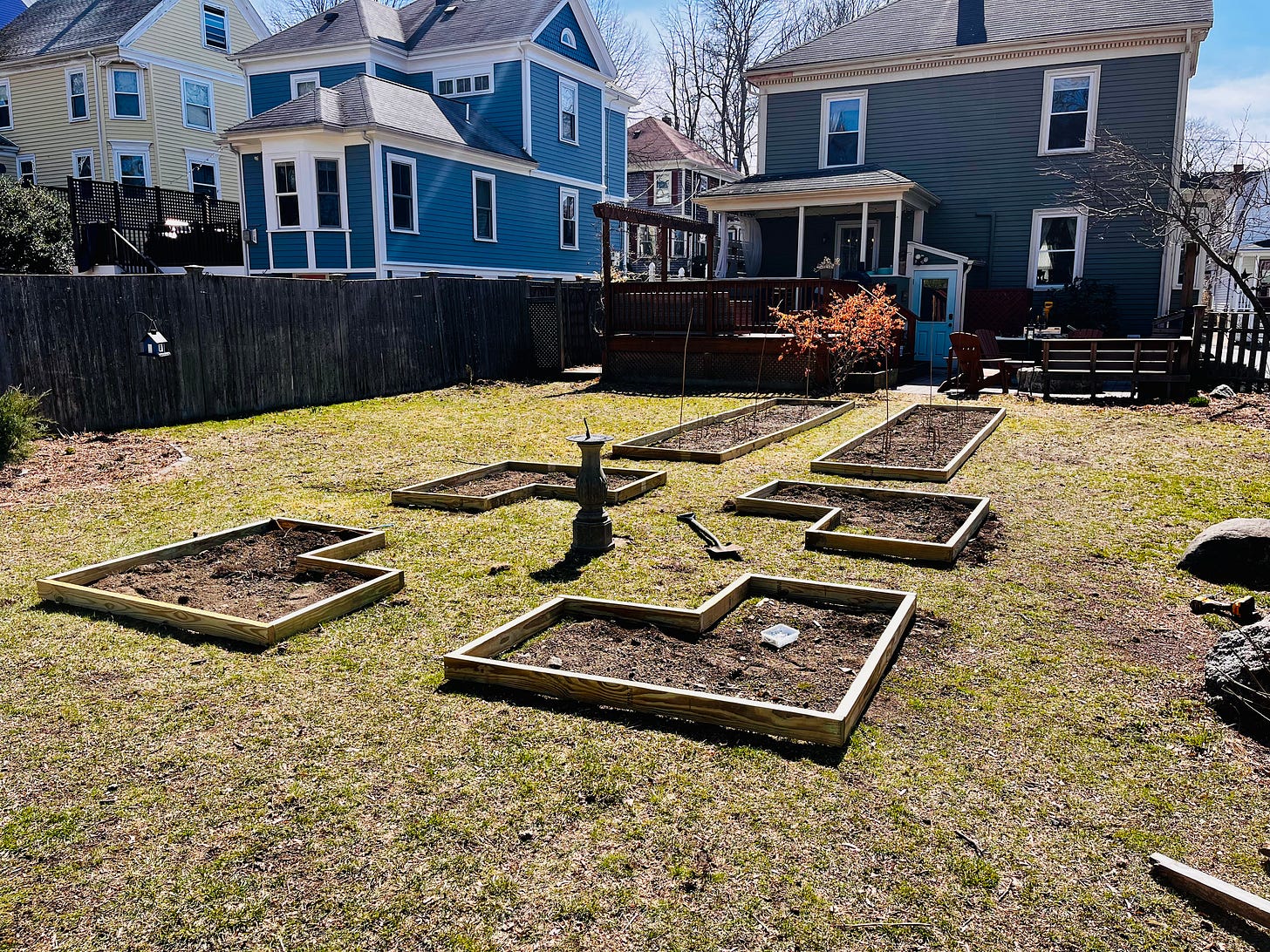Progress
Of a sort
Classical Roots is a free weekly newsletter. If you want to support the cause, the best way you can help us is to spread the word.
Last fall, I wrote a very ambitious post about my intention to rip up large portions of my yard at home and put in more flower beds. Well, this spring, despite the dismally cold and rainy weather, I have been making slow progress toward that goal.
I spent most of the winter visiting our dining room window, which affords the best view of the back yard, and staring out at its frosted blank canvas. Several times, this staring evolved into sketching as I wrote down a tentative plan for the scheme. My goals here weren’t to figure out what I was going to plant, but to determine what shape the beds should be. Many of my sketches, nonetheless, involved a lot of hedges. May other involved looping, whimsically shaped beds that would mimic the sweep of the borders that line the back and eastern sides of the yard. But none of this felt exactly right. The hedges would grow too tall and shade things out too much. And something about the rounded beds seemed muddy and unsatisfying.
At last, it occurred to me that I needed contrast. Though my garden is, and always will be, a potager-style cottage-garden affair, dedicated as much to usefulness as to aesthetics, putting in more informal beds would only turn up the noise, visually speaking, without adding harmony. What I needed were clean lines. So I created six new beds—four smaller L-shaped ones to surround a future seating area, and two longer ones to create a path that draws the eye out toward the middle of the yard and the pond beyond.
I edged all of these with simple pressure-treated two-by-fours to keep costs down and maintain a slightly less formal atmosphere. And as soon as the edging went in, I knew my instinct had been right: the square formality of the new beds plays perfectly against the informal lines of the rest of the garden. To add more year-round visual interest, I planted ten slender “Stonehenge” yews, whose thin green pillars will provide structural grounding during the summer and rise to prominence in winter. Of course, as soon as I planted the yews, a cold front swept in and the wind chill plummeted to ten degrees, killing the tender green new growth of all the trees. But they are very hearty little things, and already seem to be bouncing back as the temperature climbs.
Today, for the first time in weeks, the weather is sunny and warm. The earth seems to be making up for lost time: you can almost hear the leaves growing and the flowers opening outside. It’s the sort of day when it feels like even the wildest garden ambitions might work out well—the emotional opposite of the same time last week, when all seemed bleak, snow-clogged despair. The truth, of course, is somewhere in the middle. There will be failures, there will be frosts. But the secret is not to do perfectly—it is to keep doing.
If you enjoy what you’re reading here and want to support us, why not subscribe? It’s free to all and you’ll get access to our weekly posts, as well as a weekly subscriber-exclusive chat where we brag about our gardens and beg for advice. It’s the best way to support us.
Also: Tell me what you think! Your comments are part of what makes this program worth doing and this newsletter worth writing. If you have thoughts, advice, questions, or enthusiasm, let me know! Others are waiting to join the conversation.



Looks awesome and will bring you many hours of joy! Have a happy and Holy Easter and hug the family for us!
Looks awesome and will bring you many hours of joy! Have a happy and Holy Easter and hug the family for us!